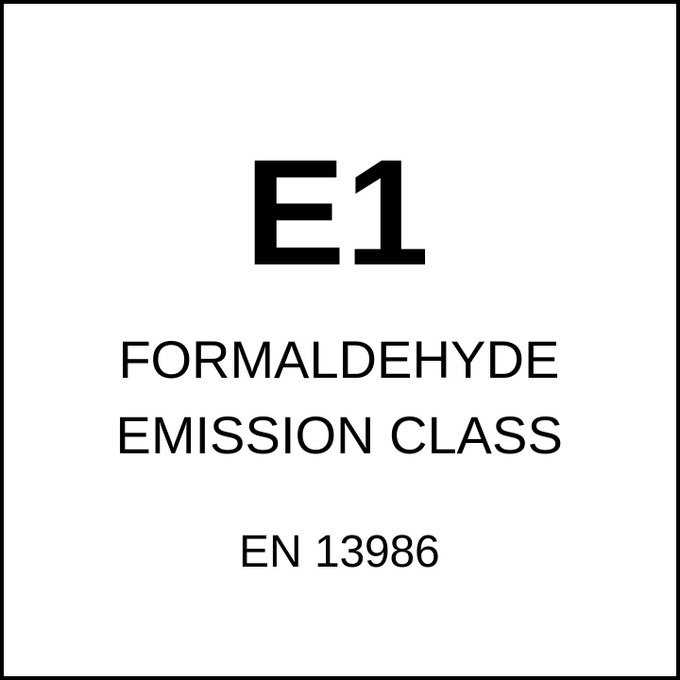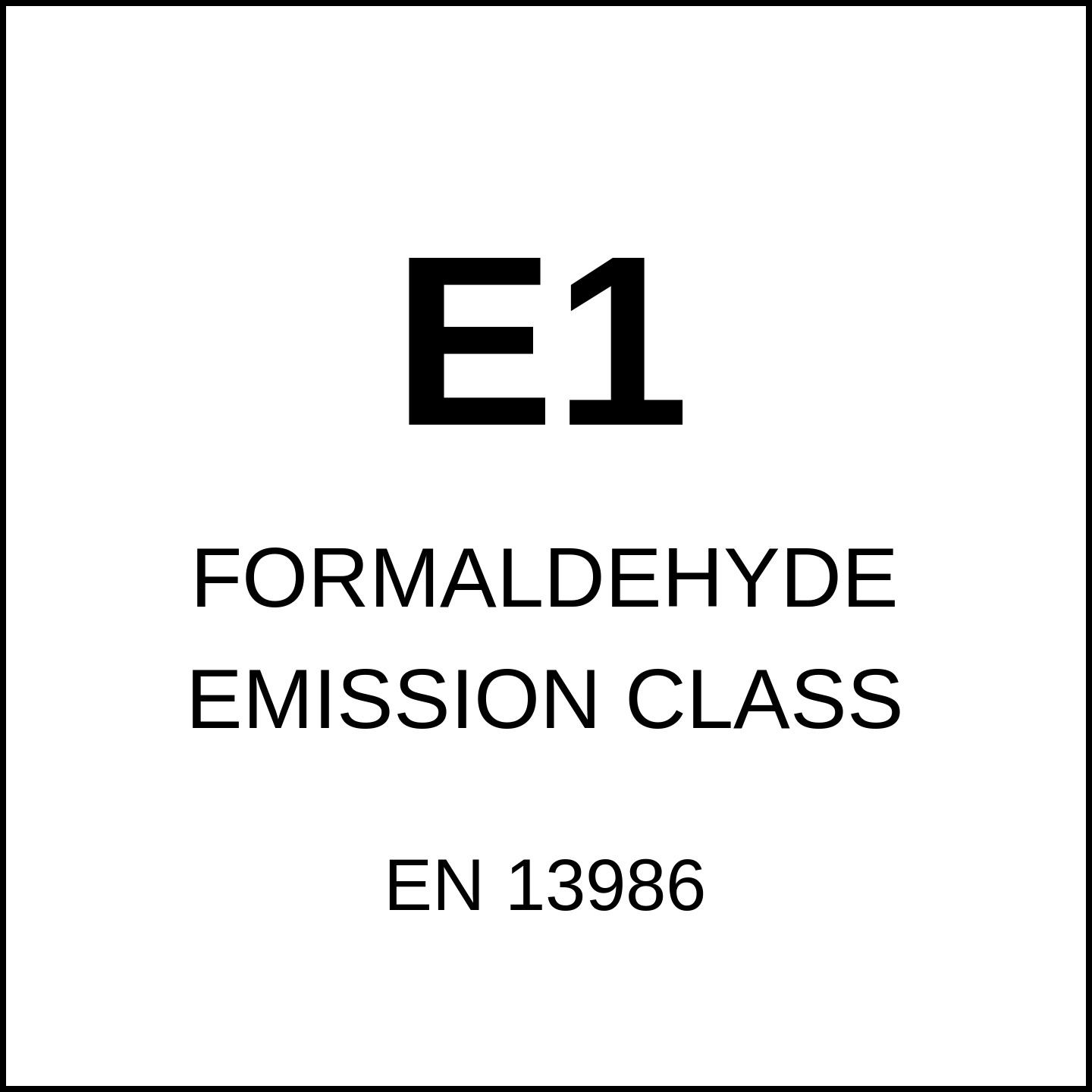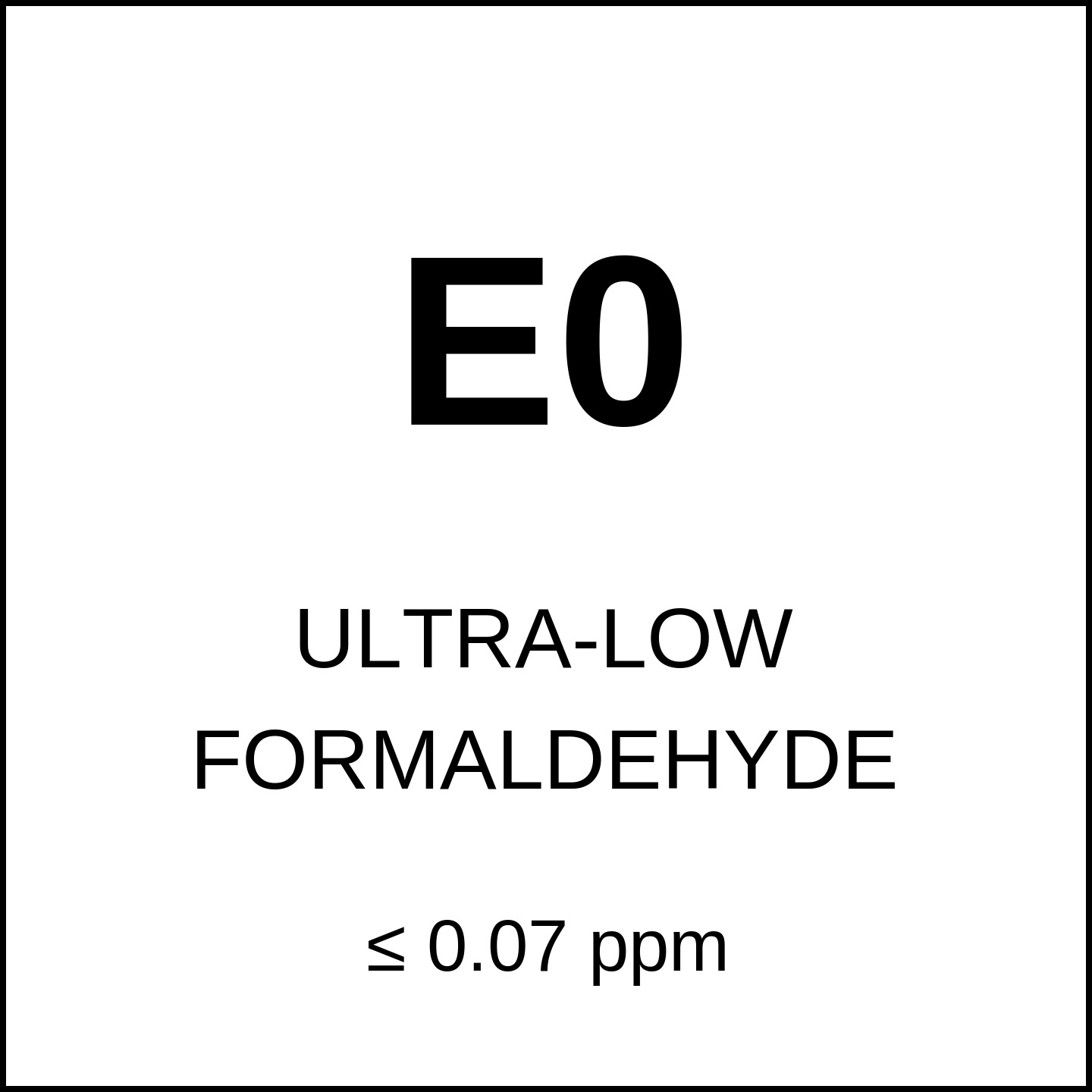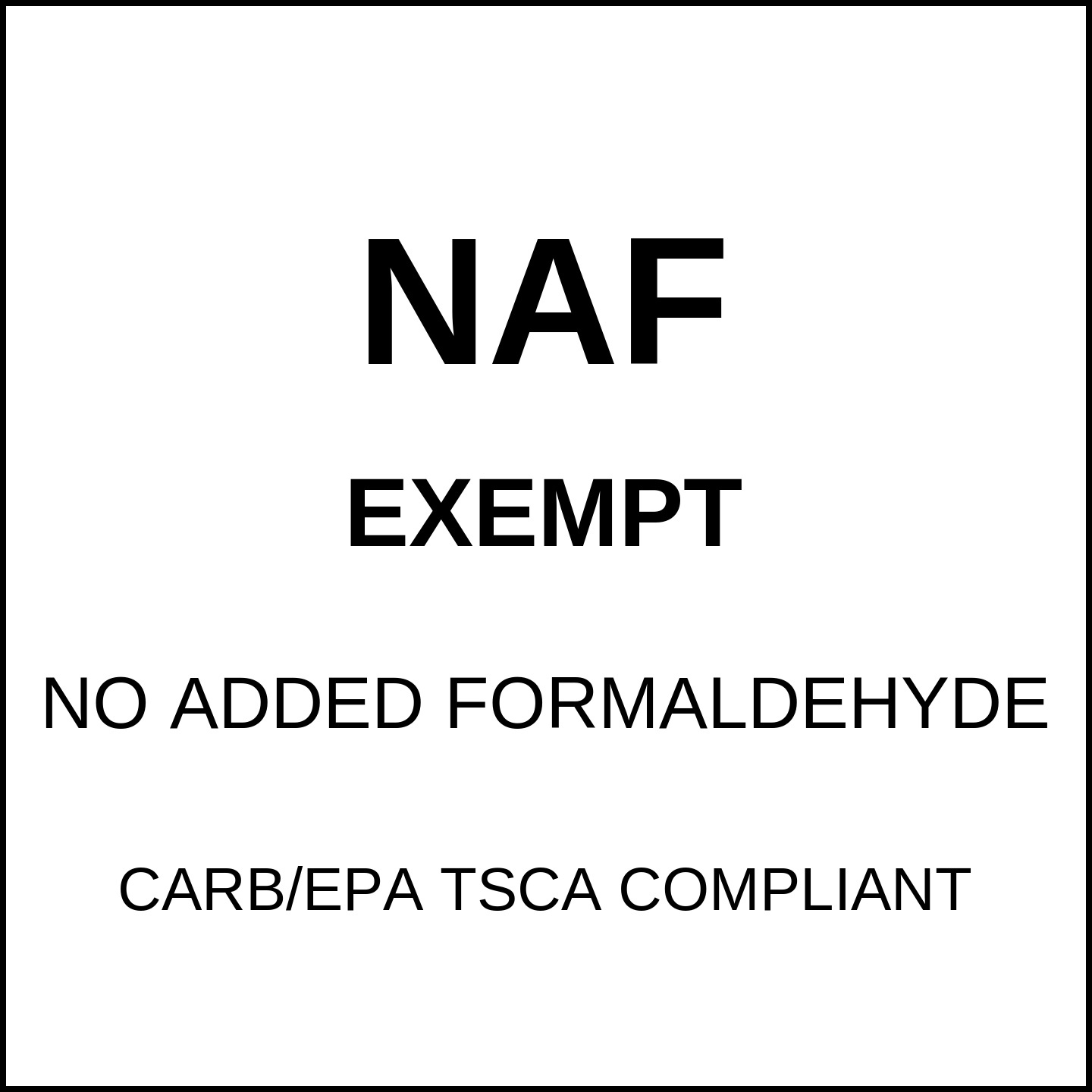
Is MDF Safe? | Cutting, Food, Pets, Painting | Regulations
Posted by Lee Watkinson on 8th Aug 2025
MDF safety has become a concern for many UK homeowners. New regulations are tightening standards whilst manufacturing improvements offer safer alternatives. We'll examine the current evidence and what it means for typical home use.
Note: We manufacture MDF skirting boards at Skirting World. This guide presents current evidence on MDF safety, including genuine health concerns and regulatory requirements. We try to present a fair and objective view.
Is MDF safe to use?
Modern MDF from reputable UK manufacturers is safe for typical home use when you choose certified products and follow basic precautions during installation. The main safety considerations are formaldehyde emissions and dust exposure during cutting.
All MDF sold legally in the UK must meet E1 emission standards, which limit formaldehyde emissions to levels considered safe for residential use. Many manufacturers now exceed these requirements, offering E0 and NAF options. E1 grade MDF is considered safe for home use, meeting all UK safety standards for residential applications.
The greatest exposure risk comes from cutting and sanding MDF, not from the finished installed product. Proper protective equipment and ventilation make DIY work safe for most people.
"MDF is fine - it's just if you are sawing it up & making lots of dust you should avoid breathing in the dust particles."
— Parent, DIY discussion
Is MDF furniture safe?
Yes, MDF furniture is safe for home use when it meets current standards. Once installed and finished (painted or sealed), MDF furniture poses minimal risk as the surface coating prevents formaldehyde emissions. The main precautions are needed during assembly if cutting or drilling is required.
Who should be more cautious
Some people may want to consider lower-emission alternatives or take extra precautions:
- People with asthma or respiratory sensitivities
- Families with young children, particularly in bedrooms
- Anyone with known chemical sensitivities
- Those planning extensive MDF installations in small, poorly ventilated spaces
For these situations, E0 or NAF grade products provide additional safety margins, though they cost more than standard E1 grade MDF.
What is formaldehyde and why does it matter
Formaldehyde is used in the resin that binds wood fibres together in MDF. Small amounts can escape into the air over time, with new products emitting more than aged ones. Emissions typically decrease significantly over 3-7 years.
Formaldehyde occurs naturally in many places. Trees produce it, your body produces it, and it's found in some foods. The safety question centres on exposure levels, not mere presence.
Did you Know: That new car smell, or the smell of new clothes is caused by formaldehyde. Textile manufacturers douse clothing and surfaces in formaldehyde to prevent mould and mildew.
Formaldehyde Levels in Context
Common sources in homes
- Wood-based products: MDF, particleboard, some plywood
- Carpets and fabrics with formaldehyde-based treatments
- Some paints, varnishes, and cleaning products
- Cigarette smoke and vehicle exhaust
- Natural emissions from solid wood
Is MDF safe when painted?
Yes, painted MDF is actually safer than unpainted MDF. Paint creates an effective barrier that seals the surface and significantly reduces formaldehyde emissions. This is why it's recommended to prime and paint MDF within 24-48 hours of installation. Once properly sealed with paint or varnish, formaldehyde emissions drop to negligible levels.
E1, E0 and NAF grades
MDF products are classified by their formaldehyde emission levels. Higher grades cost more but provide lower emissions for sensitive applications.
How to identify certified products



E0 grade typically costs 10-20% more than E1, whilst NAF grade products cost 20-40% more. The premium reflects both material costs and more complex manufacturing processes.
Health risks and vulnerable groups
Formaldehyde exposure can cause health effects, particularly at higher concentrations. Most effects occur where formaldehyde first contacts the body - eyes, nose, and throat.
Short-term effects at elevated levels
- Eye, nose, and throat irritation
- Headaches in sensitive individuals
- Respiratory discomfort for those with asthma
- Skin irritation from direct contact with dust
These effects typically occur at concentrations well above those produced by compliant MDF in normal home use. Most people experience no noticeable effects from properly installed E1-grade products.
Is MDF food safe?
MDF is not considered food-safe and should not be used for cutting boards, serving platters, or any surface that comes into direct contact with food. The formaldehyde-based resins and the porous nature of MDF make it unsuitable for food preparation. For food-contact surfaces, use solid wood, bamboo, or food-grade materials instead.
Cancer classification and context
Formaldehyde is classified as a Group 1 carcinogen by the International Agency for Research on Cancer. This classification is based primarily on studies of workers in formaldehyde production facilities and mortuaries, where exposure levels were much higher than typical home environments.
WHO guidelines indicate that cancer risks become significant only at mean exposure levels above 1.25 mg/m³ - more than ten times higher than typical home exposure from compliant MDF.
Risk requires both hazard and exposure
Classification as a carcinogen indicates potential for harm, not automatic danger. Actual risk depends on exposure levels and duration. Many common substances are classified as carcinogens, including processed meat and outdoor air pollution.
Groups requiring extra consideration
- People with asthma: May experience respiratory symptoms at lower concentrations
- Young children: Developing respiratory systems may be more sensitive
- Pregnant women: Some studies suggest potential developmental effects at high exposure levels
- Chemical-sensitive individuals: May react to concentrations that don't affect others
- Pet owners: Animals can be sensitive to formaldehyde, particularly if they chew on MDF
Pet safety considerations
Is MDF safe for guinea pigs, hamsters, and rabbits? MDF is not recommended for pet cages or habitats, especially for animals that chew. Small animals are more sensitive to formaldehyde emissions due to their size and faster metabolisms. Additionally, if pets chew on MDF, they can ingest both the formaldehyde-containing resins and wood fibres, which can cause digestive issues.
For pet habitats, use untreated solid wood (kiln-dried pine, aspen, or hardwoods), plywood made with soy-based adhesives, or pet-safe plastic materials. If MDF furniture is in the same room as pets, ensure good ventilation and prevent animals from chewing on it.
"It would not be good for a pet to chew it up. Most has a form of formaldehyde in it to glue the wood fibers together."
— Pet safety expert
Safe cutting and installation
The greatest exposure risk from MDF occurs during cutting and sanding, not from finished installed products. Proper protective equipment and techniques make DIY work safe for most people.
Is it safe to cut and sand MDF?
Yes, cutting and sanding MDF is safe when proper precautions are taken. The dust created during these processes contains both wood particles and formaldehyde, making respiratory protection essential. Always use FFP3 or P100-rated dust masks, work in well-ventilated areas, and use dust extraction where possible.
"I wear my respirator just about any time I make dust in the shop. The respirator is more comfortable, the filters last longer, and it's much more effective at keeping the dust out."
— Professional woodworker
Is it safe to laser cut MDF?
Laser cutting MDF requires extreme caution and professional equipment. The process releases concentrated formaldehyde fumes and produces toxic smoke. Only attempt laser cutting with proper industrial ventilation, fume extraction systems, and in compliance with workplace safety regulations. Most home laser cutters are not suitable for MDF.
Essential protective equipment
FFP3 or P100 Dust Mask
Minimum protection level for MDF dust. Standard DIY masks provide insufficient protection.
Eye Protection
Safety glasses to protect against dust particles and flying debris during cutting.
Dust Extraction
Use tool-attached extraction or work area vacuum systems to capture dust at source.
Good Ventilation
Work outdoors when possible, or ensure strong cross-ventilation in enclosed spaces.
Installation best practices
Plan cuts to minimise indoor work - Cut lengths outdoors or in well-ventilated workshops where possible.
Seal cut edges promptly - Apply PVA glue or primer to freshly cut edges to reduce formaldehyde emissions.
Clean with vacuum, not broom - Sweeping disperses fine particles into the air rather than removing them.
Prime and paint within 24-48 hours - Finishing seals the surface and prevents ongoing emissions.
For sensitive individuals: Consider having MDF pre-cut by suppliers or using professional installation services. The fitting itself creates minimal dust compared to cutting operations.
Never burn MDF
Is it safe to burn MDF? Absolutely not.
- Burning MDF releases toxic formaldehyde gas and other harmful chemicals
- The smoke is dangerous to inhale and can cause serious respiratory issues
- Never burn MDF in wood burners, fireplaces, or outdoor fires
- Dispose of MDF waste at appropriate recycling centres or in general waste
UK regulations and what's changing
As of August 2025, UK regulations require all MDF sold to consumers to meet E1 emission standards, limiting formaldehyde emissions to 0.124 mg/m³ under laboratory test conditions. This aligns with European requirements and represents the baseline safety level.
Is MDF banned anywhere?
No, MDF is not banned in any country. Despite occasional rumours, MDF remains legal worldwide when it meets local emission standards. Some countries have stricter standards than others - for example, Japan and Germany have lower emission limits than the UK - but none have banned MDF outright. The trend is toward stricter regulation rather than prohibition.
Coming regulatory changes
From August 2026, new EU regulations will halve allowable formaldehyde emissions to 0.062 mg/m³. While the UK isn't bound by EU law, manufacturers serving both markets are already adapting products to meet these stricter standards.
These regulatory pressures mean the MDF available today is significantly safer than products from even five years ago, with further improvements expected.
What to look for when buying
- E1 certification minimum (look for clear markings on packaging)
- CE marking indicating European compliance
- Manufacturer's safety data sheets if requested
- Reputable suppliers who can answer safety questions
- Avoid products with strong chemical odours or no visible certifications
Questions to ask your supplier
Use this template to enquire about MDF safety with suppliers:
Warning signs to avoid
- ⚠ No visible certification markings
- ⚠ Prices significantly below market rates
- ⚠ Suppliers unable to provide safety documentation
- ⚠ Strong chemical odours from the product
Common safety questions
Is MDF safe in the home? ▼
Yes, MDF that meets current E1 standards is safe for home use. Once installed and painted, emissions are minimal. Ensure good ventilation during installation and the first few weeks after, particularly in bedrooms and small spaces.
How long does MDF off-gas? ▼
MDF emissions are highest when new and decrease significantly over time. Most formaldehyde is released in the first few months, with emissions dropping by about 50% after six months. After 2-3 years, emissions are minimal. Painting or sealing MDF significantly reduces off-gassing.
Can MDF make you sick? ▼
Compliant MDF rarely causes health issues when properly installed. However, sensitive individuals may experience irritation from formaldehyde emissions, particularly from new, unsealed MDF. The dust from cutting MDF is more likely to cause respiratory issues than the installed product. Always use proper protection when working with MDF.
Is MDF safe for children's furniture? ▼
E1-grade MDF is considered safe for children's furniture when properly sealed. For extra peace of mind in nurseries and children's bedrooms, consider E0 or NAF grade MDF, which have lower emissions. Always ensure furniture is well-ventilated before use and keep rooms aired regularly.
What's the safest MDF alternative? ▼
The safest alternatives to standard MDF are NAF (No Added Formaldehyde) MDF, solid wood, plywood made with soy-based adhesives, or bamboo products. Each has different costs and characteristics, but all have lower formaldehyde emissions than standard MDF.
The current state of MDF safety
Modern regulated MDF poses manageable health risks when used normally in homes. The key safety factors are choosing certified products, following proper installation practices, and ensuring adequate ventilation during and after installation.
Regulatory changes are driving the industry toward safer products. The MDF available today is significantly safer than products from previous decades, with further improvements expected as stricter emission limits take effect.
For typical applications like skirting boards and interior mouldings, E1-certified MDF from reputable manufacturers provides acceptable safety levels for most people. Those with specific sensitivities or preferences can choose lower-emission alternatives at higher cost.
Key safety considerations
- Choose certified products from reputable suppliers
- Use FFP3 or P100-rated dust protection during cutting and sanding
- Seal and finish MDF promptly after installation
- Maintain good ventilation during installation and initial period
- Never burn MDF waste - dispose of it properly
- Consider higher grades (E0 or NAF) for sensitive individuals or applications
Further reading and resources
EH40/2005 Workplace exposure limits
Official HSE guidance on workplace exposure limits including formaldehyde
HSE Woodworking FAQs
Health and safety guidance for woodworking including MDF
Formaldehyde toxicology
Government information on formaldehyde health effects and incident management
This assessment reflects current scientific understanding and regulatory standards. As research continues and regulations evolve, safety recommendations may change accordingly.







